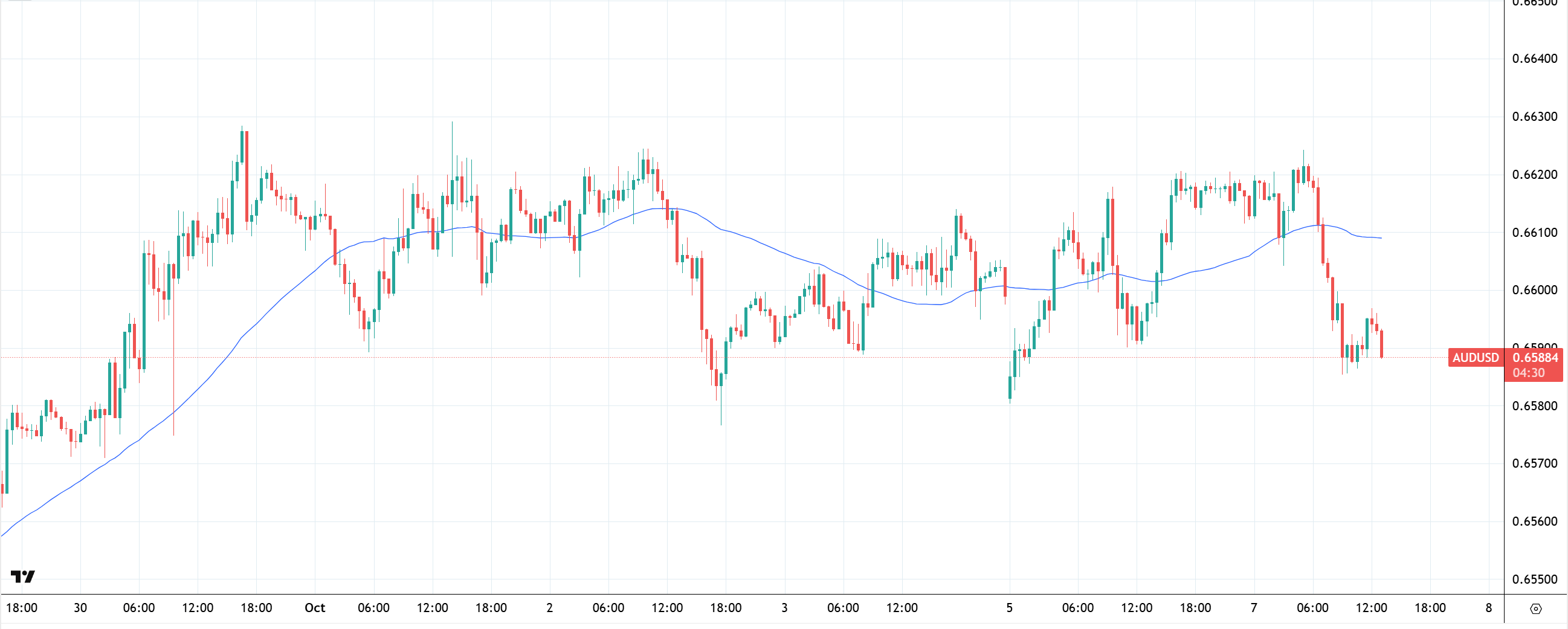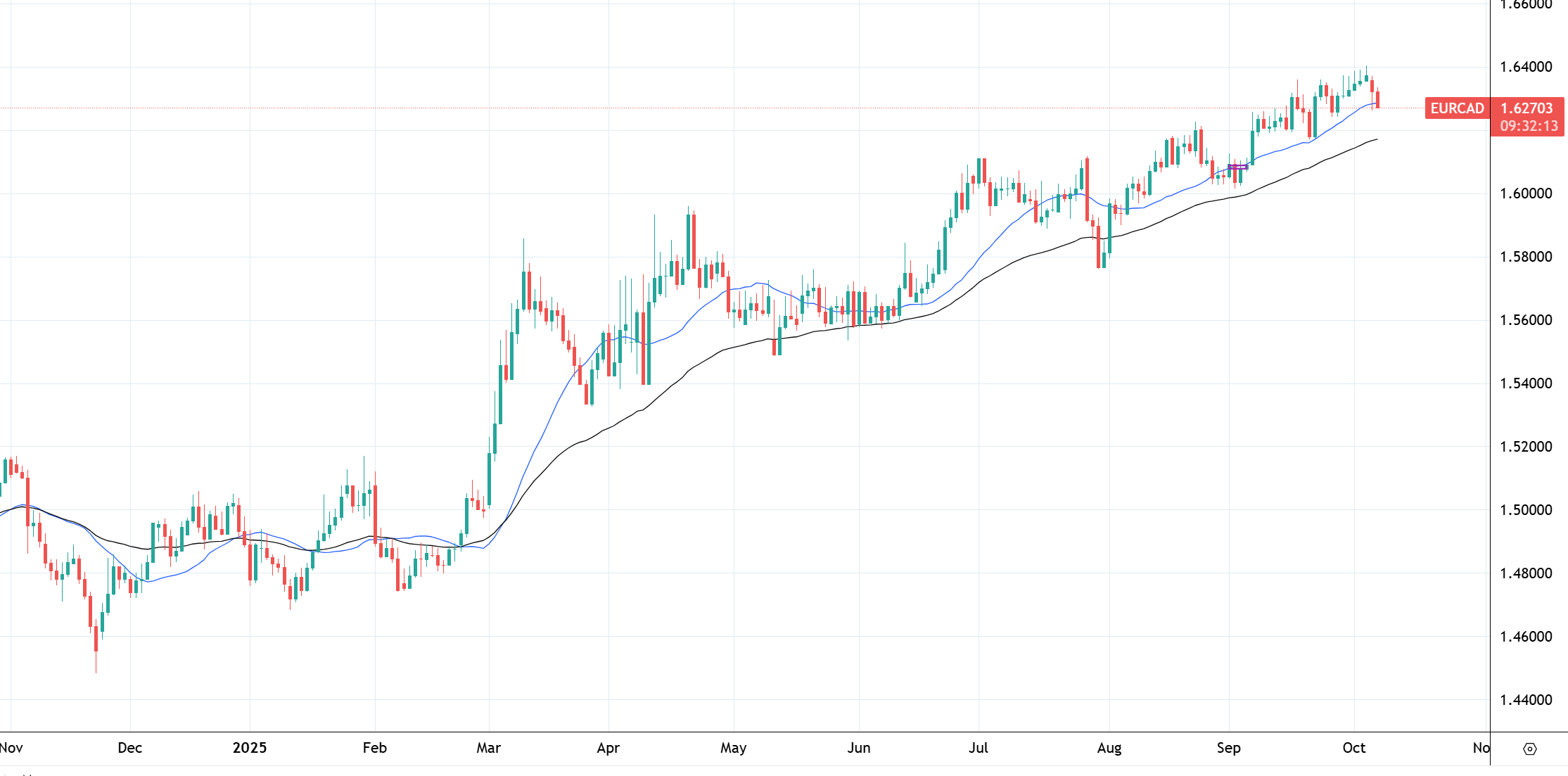Moving averages stand as one of the most fundamental and enduring tools in technical analysis. Their popularity is not accidental. For decades, traders of all backgrounds—whether individual retail investors, professional money managers, or algorithmic hedge funds—have relied on moving averages to help make sense of what often appears to be the chaotic movement of currency prices. At first glance, forex charts can seem overwhelming. Prices fluctuate rapidly, driven by millions of participants worldwide. Economic data releases, political events, interest rate decisions, and even unexpected tweets can cause sudden fluctuations in a currency's value. In such an environment, traders need methods that cut through the noise and provide structure. This is where moving averages prove invaluable.
A moving average is not a crystal ball. It does not attempt to predict the exact price tomorrow or next week. Instead, it condenses what has already happened, presenting a smoother line that allows traders to view the bigger picture without being distracted by every tick on the screen. Imagine looking at the ocean: the waves rise and fall constantly, but the tide has a broader, steadier direction. Moving averages act like the tide—they reveal the underlying trend hidden beneath the waves of daily price fluctuations.
The reason this matters so much in forex is that trends often define profitability. Studies of trading performance consistently show that traders who align themselves with the dominant trend tend to outperform those who fight against it. Yet spotting a trend is not always straightforward. What appears to be an uptrend on a 5-minute chart may seem insignificant when viewed on a daily chart. Conversely, a sideways market on the hourly timeframe might be part of a strong long-term trend visible on the weekly chart. Moving averages help bridge these perspectives, providing traders with an adaptable framework that works across multiple time horizons.
Perhaps most importantly, moving averages serve a psychological function. Trading is not only about charts and data; it is also about human behavior. Many traders lose money not because they lack knowledge, but because they lack discipline. The constant ups and downs of price action can trigger fear, greed, and doubt. A moving average provides an anchor, a reference point that calms the mind and keeps decisions consistent. By reducing the urge to react impulsively to every small fluctuation, it encourages traders to focus on broader trends and stick to a systematic approach.
This guide provides a comprehensive overview of moving averages in forex trading. We will explore the different types—such as simple, exponential, and weighted—highlight how they are calculated, and examine how they are applied in practical trading strategies. We will also consider their advantages, limitations, and advanced uses in professional contexts. Whether you are new to forex or already experienced, mastering the logic and application of moving averages can transform the way you interpret the market and manage risk. By the end of this guide, you will not only understand what moving averages are, but also how to incorporate them into a disciplined, adaptable, and effective trading framework.
What Is a Moving Average?
A moving average is a mathematical calculation that smooths out price data by creating a constantly updated average price over a specific period of time. In forex, where currencies can fluctuate rapidly, moving averages help traders reduce short-term noise and highlight the underlying trend. For example, a 50-day moving average plots the average closing price of a currency pair over the last 50 days, updating with each new trading day. This approach transforms chaotic price action into a smoother line that reveals whether the market is trending upward, downward, or moving sideways.

AUD / USD 30-min chart with a 50-period simple moving average, Source: TradingView
The main purpose of a moving average is not to predict the future but to provide context for the present. By comparing the current market price to its average, traders can gauge whether momentum is building or weakening. This makes moving averages a cornerstone of both technical analysis and algorithmic systems.
Types of Moving Averages
Not all moving averages are created equal. Traders can choose from several variations, each with its own strengths and weaknesses. The choice depends on trading style, time horizon, and sensitivity to price changes.
Simple Moving Average (SMA)
The simple moving average is the most basic form. It calculates the arithmetic mean of a set of prices over a defined period. For example, a 20-day SMA adds the last 20 closing prices and divides the sum by 20. This creates a line that smooths out fluctuations but responds slowly to new price changes. The SMA is popular for identifying long-term trends and support/resistance levels.
Exponential Moving Average (EMA)
The exponential moving average assigns more weight to recent prices, allowing it to react more quickly to new information. In volatile forex markets, the EMA is often preferred by traders who want timely signals without sacrificing too much reliability. Day traders and swing traders frequently rely on EMAs such as the 10, 20, or 50-period to capture momentum shifts.
Weighted Moving Average (WMA)
The weighted moving average assigns different weights to data points, prioritizing recent prices even more aggressively than the EMA. This makes it extremely responsive but also more prone to false signals in choppy markets. WMAs are often used in custom indicators or advanced algorithmic trading systems.
Smoothed Moving Average
The smoothed moving average combines aspects of SMAs and EMAs. It reduces noise by applying a longer calculation window, which makes it useful for long-term trend analysis. However, its slow response can make it unsuitable for fast-moving short-term strategies.
Key Functions of Moving Averages in Forex
Moving averages serve multiple functions beyond simply plotting a line on a chart. Their versatility makes them indispensable for both beginner and professional traders.
- Trend Identification: Moving averages highlight whether a currency pair is trending up, down, or sideways.
- Support and Resistance: Certain moving averages, such as the 50-day and 200-day, often act as dynamic support or resistance levels.
- Entry and Exit Signals: Crossovers between different moving averages can generate buy or sell signals.
- Risk Management: Moving averages can help set stop-loss levels based on trend direction.
- Algorithmic Integration: They are widely used in trading robots and automated systems for systematic execution.
Common Strategies Using Moving Averages
Moving averages are most powerful when integrated into clear strategies. The following methods are widely applied in forex trading.
Single Moving Average Strategy
This strategy uses a single moving average as a trend filter. For instance, if the EUR/USD is above its 100-day SMA, traders may favor long positions. Conversely, if the price is below the average, short positions become more attractive. While simple, this approach helps traders align with the prevailing trend.
Moving Average Crossover
One of the most popular strategies is the crossover method. This involves plotting a short-term moving average (such as the 20-day EMA) and a long-term moving average (such as the 50-day EMA). A buy signal occurs when the short-term average crosses above the long-term average, while a sell signal occurs when it crosses below. Though effective, crossovers can produce whipsaws in ranging markets.

EUR/CAD daily chart with a 20-day EMA / 50-day SMA crossover, Source: TradingView
Dual Timeframe Confirmation
Advanced traders often confirm signals by analyzing multiple timeframes. For example, if the daily chart shows the 50-day SMA trending upward while the hourly chart shows a bullish crossover, the alignment strengthens the conviction to enter a trade. This reduces the chance of acting on false signals.
Moving Average with Price Action
Some traders combine moving averages with candlestick patterns or support/resistance zones. For example, if GBP/JPY is trending above the 50-EMA and forms a bullish engulfing candle near the average, it reinforces the probability of continuation. This integration of tools increases accuracy.
Advantages and Limitations
Like any trading tool, moving averages have both strengths and weaknesses.
| Advantages | Limitations |
|---|---|
| Simple to understand and apply | Lagging indicator, reacts after price moves |
| Helps identify trends clearly | Prone to whipsaws in ranging markets |
| Flexible: works on any timeframe | May generate conflicting signals across timeframes |
| Essential for algorithmic trading systems | Requires confirmation from other indicators |
Advanced Uses of Moving Averages
Beyond basic strategies, moving averages can be adapted for advanced applications. Algorithmic traders, hedge funds, and institutional players often incorporate them into complex systems.
- Volatility Filters: Combining moving averages with indicators like ATR to filter trades in volatile conditions.
- Adaptive Moving Averages: Adjusting calculation periods dynamically based on volatility or market cycles.
- Multiple Averages: Using three or more moving averages to create layered strategies, such as the “rainbow” system.
- Hybrid Models: Integrating moving averages with machine learning algorithms for predictive analytics.
Conclusion
When traders first encounter moving averages, they often view them as little more than decorative lines overlaying price charts. Yet as this guide has shown, they are much more than that. Moving averages represent the marriage of simplicity and power. They take complex, unpredictable data and convert it into something actionable, offering traders a compass in markets that are otherwise dominated by uncertainty.
The true strength of moving averages lies in their ability to adapt. A simple moving average may be enough for a long-term investor who only wants to confirm whether a currency pair is broadly trending upward or downward. At the same time, an exponential moving average can provide the rapid responsiveness that short-term traders need to capture fleeting intraday opportunities. Weighted and smoothed variations offer additional flexibility, ensuring that no matter what style of trading one prefers—scalping, swing trading, or position trading—there is a moving average approach that fits.
However, to use them effectively, traders must also embrace their limitations. Moving averages are inherently lagging indicators. They do not anticipate turning points in advance but rather confirm them after the fact. A crossover strategy, for example, may issue a buy signal well after the beginning of a trend has already unfolded, leaving the trader with only a portion of the move. Similarly, in sideways or choppy conditions, moving averages can generate false signals that lead to frustration. This is why no serious trader should rely on them alone. Instead, moving averages are best viewed as one piece of a larger analytical toolkit, to be combined with oscillators, candlestick analysis, support and resistance, and above all, sound risk management.
Beyond the mechanics, moving averages carry a deeper lesson for traders. They embody the idea that success in forex is not about predicting every tick or outsmarting the market’s randomness. It is about consistency, discipline, and alignment with larger forces. Just as a moving average smooths out the noise of price action, a trader must learn to smooth out the noise of emotion. Patience, perspective, and adherence to a structured plan often matter more than finding the perfect entry or exit. Moving averages reinforce these virtues by reminding traders to focus on the trend, not the distraction of temporary volatility.
For institutional players, moving averages remain a critical building block in quantitative models. Hedge funds and banks may layer multiple averages, adjust their sensitivity based on volatility, or combine them with artificial intelligence systems. Yet the principle remains the same: identify structure, reduce noise, and align trades with probabilities rather than hunches. The fact that moving averages are used at both the beginner and institutional levels is a testament to their enduring relevance.
Mastering moving averages means mastering more than a technical indicator—it means mastering perspective. Traders who learn to see beyond the noise, who accept the lag as a natural feature, and who integrate moving averages thoughtfully into a larger strategy will be better positioned to survive and thrive in the forex market. The forex market will always be uncertain, but moving averages provide a steady handrail, a way to walk through volatility with clarity and discipline. They do not guarantee profits, but they give traders a framework to manage risk, follow trends, and trade with confidence. That alone makes them indispensable in the toolkit of any serious forex participant.
Frequently Asked Questions
What is the best moving average for forex trading?
There is no single “best” moving average. Short-term traders often prefer the 10, 20, or 50-period EMAs for quick signals, while long-term investors rely on 100 or 200-day SMAs to track broader trends.
How do moving averages generate buy or sell signals?
Signals are often generated through crossovers. For example, when a short-term EMA crosses above a long-term EMA, it suggests bullish momentum. Conversely, a downward crossover indicates bearish conditions.
Can moving averages be used alone?
While they can provide valuable insights, moving averages should not be used in isolation. Combining them with tools like RSI, MACD, or support/resistance analysis improves reliability.
Do professional traders use moving averages?
Yes. Institutional traders and hedge funds frequently use moving averages within broader systems. They may serve as filters, volatility indicators, or triggers for algorithmic models.
Note: Any opinions expressed in this article are not to be considered investment advice and are solely those of the authors. Singapore Forex Club is not responsible for any financial decisions based on this article's contents. Readers may use this data for information and educational purposes only.







